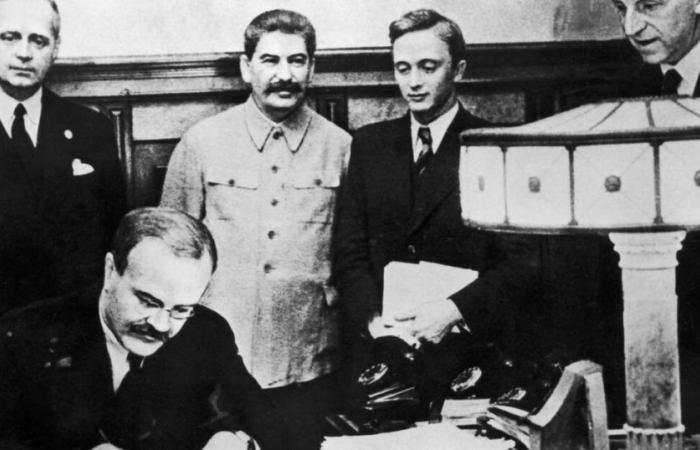
Finding “nowhere mention” of the alliance between Nazis and communists, David Lisnard called on Hatier to tell him where the lesson devoted to the German-Soviet pact is located. It was page 70.
In a publication shared on Sunday evening, October 13 on the social network history intended for third graders. “Can you tell me where, in your third grade history and geography textbook, the German-Soviet pact of August 1939 is mentioned? My son and I find nowhere mention of this tragically decisive alliance between Nazis and communists.
Immediately after his tweet, father David Lisnard was quickly directed by an army of history teachers. Since it was on pages 70 and 71 of the manual, available online, that the unobtainable lesson was located.
We then read that, “in August 1939, Germany signed a non-aggression pact with the USSR, the German-Soviet pact (DOC. 5), which allowed it to attack Poland on September 1, 1939, without fearing the USSR . But this time, France and the United Kingdom declare war on Germany. This phrase is even audible in the podcast version of the lesson. Document 5 in question is made up of five articles of the German-Soviet pact. Two questions ask the student to think about “Why did this alliance surprise a lot?” et “Why does the pact allow Germany to attack Poland?”
Faced with numerous questions about “in the chapters on the USSR, Nazi Germany and the course of the conflict” and would only be mentioned “in a concise – but clear – manner and in a place where everyone will judge the exhibition”.
In reality, the lesson on the German-Soviet pact is found in the chapter devoted to “Totalitarian experiences and weakened democracies” which extends from pages 48 to 74. Pages 52 to 59 are dedicated to the Soviet totalitarian regime, then the pages 60 to 65 to Nazism. Pages 66 to 69 are devoted to the French situation and the coming to power of the Popular Front. The lesson devoted to democracies weakened, in particular by the German-Soviet pact, is part of this continuation. The unfolding of the Second World War conflict begins a few pages later, page 76.
The German-Soviet pact is still part of the third-grade history curriculum. The proof, in the “Support resources for the history-geography program in cycle 4”, intended for teachers and available on the Eduscol platform, we read that “the signing of the German-Soviet pact, on August 23, 1939, sanctioned the failure of French and English diplomacy and made war practically inevitable, Hitler now having a free hand in the West. Declared on September 3 following the German aggression against Poland, it took, with the attack on the USSR by Hitler on June 22, 1941, the figure of a “war of annihilation” on the front of the ‘East ; This radicalization is one of the causes of the Jewish and Gypsy genocides.”





